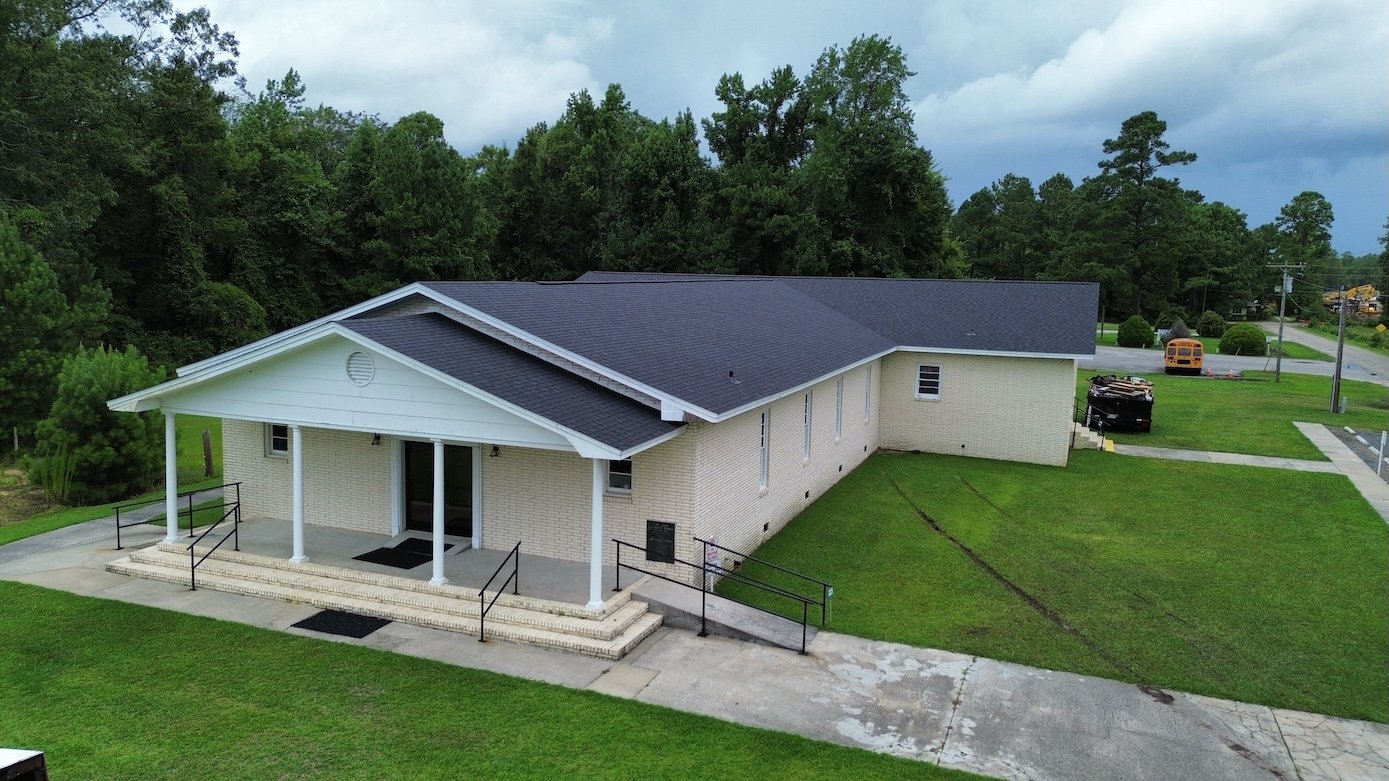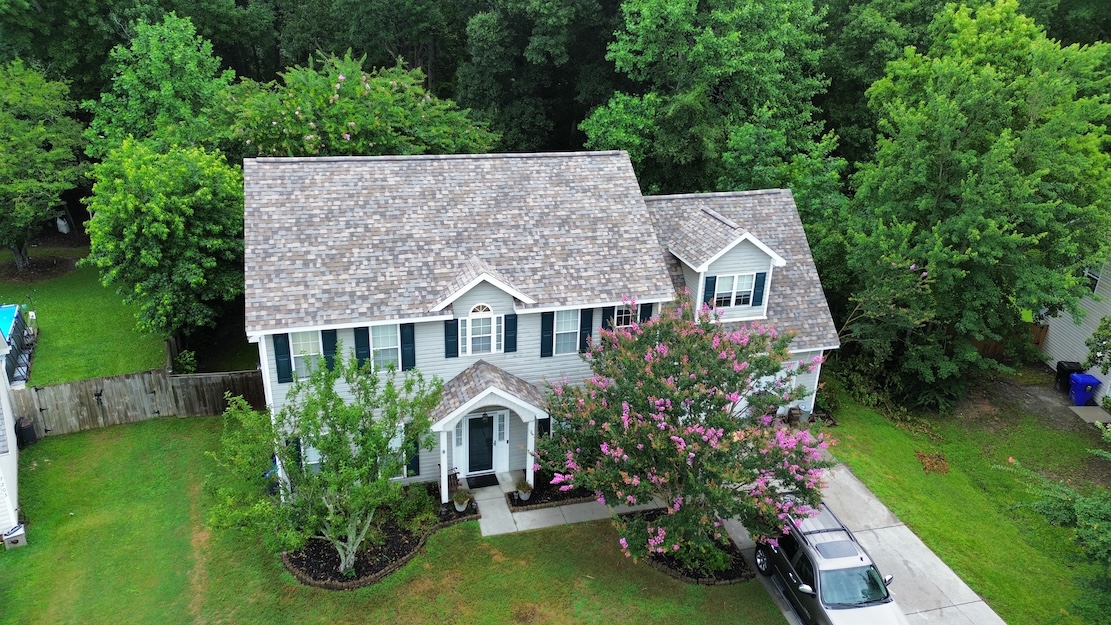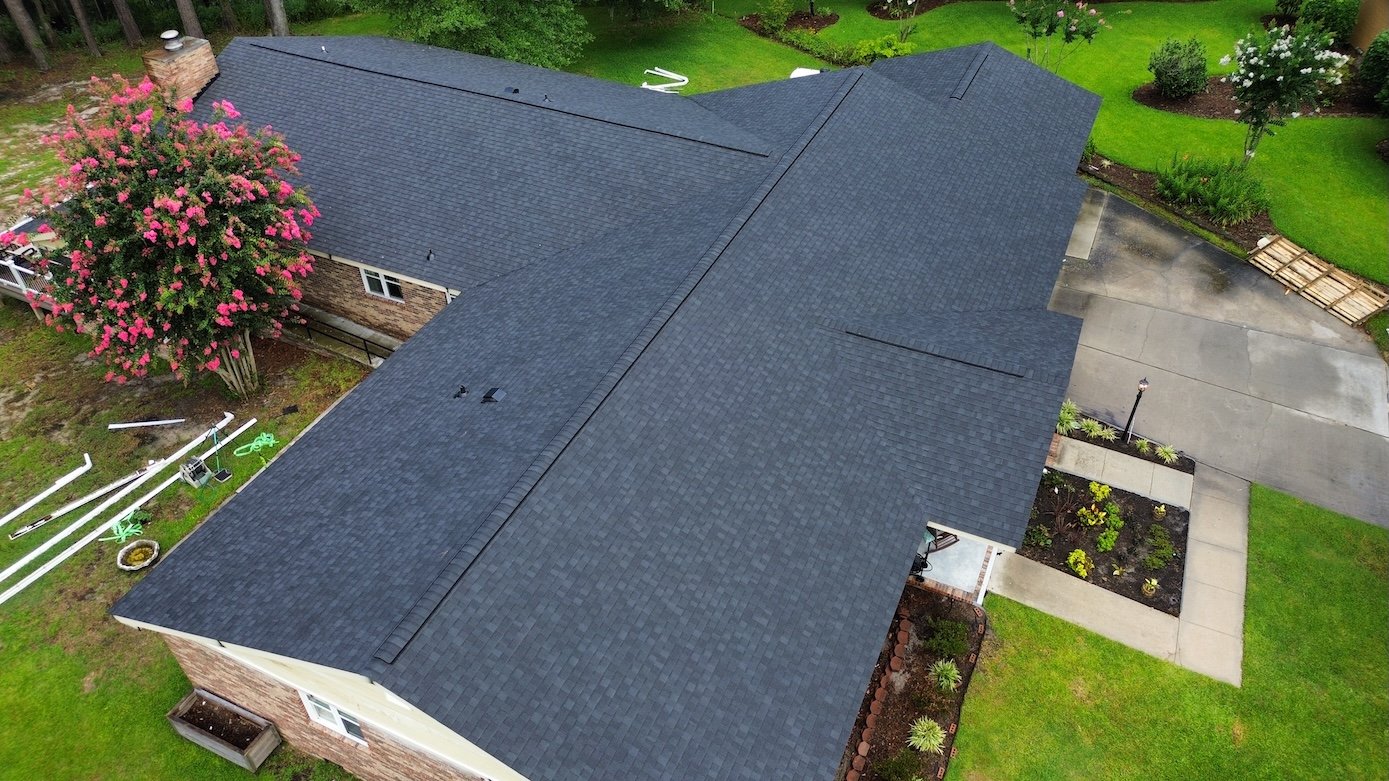Steep-Slope vs. Low-Slope Roofs: What’s Best for Commercial Buildings?
Summit Roofing

In commercial construction, the roof isn’t just protection. It affects maintenance costs, energy efficiency, and usable space. For property owners in Wilmington, the stakes are even higher.
Summit Roofing has seen time and time again that salt air, humidity, heavy rains, and hurricanes mean your roof must do more than cover square footage. It has to hold up against one of the most demanding climates in the country.
So which type of roof works best for your business? A low-slope system or a steep-slope system? Here’s how the two compare for commercial roofing in coastal NC.
What Is a Low-Slope (Flat) Roof?
Low-slope roofs—often called flat roofs—are the go-to option for many commercial buildings. They have a very subtle pitch, usually about ¼ inch per foot, which is just enough to allow water to drain.
You’ll typically find them on:
- Warehouses
- Retail centers and shopping malls
- Office buildings
- Industrial facilities
Low-slope roofs are built with durable membranes such as TPO, EPDM, or PVC. These materials create a watertight seal and allow for efficient use of rooftop space. Many owners use flat roofs to mount HVAC systems, install solar panels, or even build green roof systems.
See our options for commercial roof services in Wilmington.
What Is a Steep-Slope Roof?
Steep-slope roofs are less common on large commercial facilities but are a strong choice for certain property types. A steep-slope roof has a pitch of 3:12 or higher and is built with shingles, tile, or standing seam metal.
You’ll most often see them on:
- Multifamily housing complexes
- Churches
- Schools
- Smaller offices and municipal buildings
The main advantage of steep slopes in Wilmington is their ability to shed water quickly. Heavy rains are less likely to pool or penetrate the system, which is especially important in our coastal climate.
For a deeper breakdown of how these roofing systems compare, Polyglass offers an overview of low-slope vs. steep-slope commercial roofs.
Pros and Cons for Commercial Buildings
Each roof type has unique advantages and challenges.
Low-Slope Roof Advantages
- Cost-effective for large building footprints
- Easier and safer for crews to access for inspections and maintenance
- Maximizes rooftop utility space for HVAC, solar panels, or communications equipment
Low-Slope Challenges
- More prone to ponding water if drainage isn’t managed correctly
- Shorter lifespan in hurricane-prone areas unless inspections and repairs are frequent
Steep-Slope Roof Advantages
- Superior water runoff and better wind resistance during storms
- Attractive curb appeal for businesses that value exterior appearance
- Longer material lifespans when installed properly
Steep-Slope Challenges
- More expensive for large buildings due to additional materials and labor
- Less rooftop space for utilities or equipment
- Higher installation complexity because of the steeper pitch
Claris Design has a helpful guide that outlines how to choose the right commercial roof for your business if you still want to know more about different types of roofing.
Which Roof Type Works Best in Wilmington’s Coastal Climate?
Choosing between low-slope and steep-slope roofing often comes down to your building type and how you use the space.
- Retail centers, warehouses, and industrial buildings: Low-slope roofs are the most practical and cost-efficient. They allow for easier maintenance and make rooftop utility installations straightforward.
- Churches, schools, multifamily housing, and smaller offices: Steep-slope roofs offer greater durability and water resistance. They also provide an aesthetic appeal that can enhance a building’s image.
- Mixed-use properties: Some developments combine both systems, using steep slopes for residential or visible areas and flat roofs for utility sections.
Want personalized guidance? Ask our team which roof type is right for your commercial property.
FAQs: Commercial Roof Slopes in Wilmington NC
Why are most commercial buildings low-slope?
They’re more cost-effective and practical for wide buildings with expansive square footage.
Which slope lasts longer in Wilmington’s climate?
Steep-slope roofs often last longer due to better drainage, but low-slope roofs can perform well with quality membranes and regular maintenance.
Can solar panels work on steep-slope roofs?
Yes. Panels can be mounted at an angle, but flat roofs typically allow easier installation and better orientation.
Does slope affect insurance rates?
In some cases, it can. Insurers may consider steep-slope systems more resilient in storm-prone areas, potentially lowering premiums.
Match Your Roof to Your Building’s Needs
Both low-slope and steep-slope roofs have advantages. Your choice all depends on your building type, budget, and long-term goals. In Wilmington’s coastal climate, choosing the right slope can mean fewer leaks, greater durability, and savings over the life of your roof.
Whether you need roof repair or a roof replacement in Wilmington NC, we’re here to provide solutions that last. Learn more on our commercial roofing page. We help businesses evaluate their options and build systems designed to withstand local conditions.
Schedule a consultation to compare roof options for your Wilmington property.







